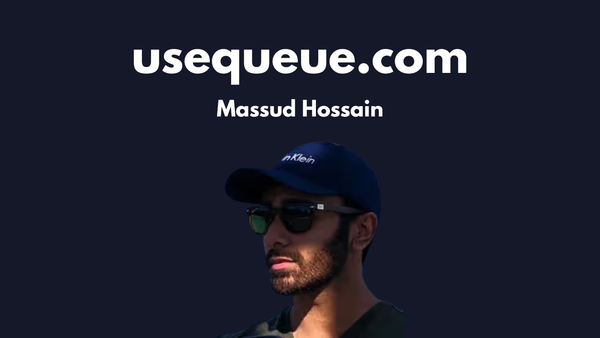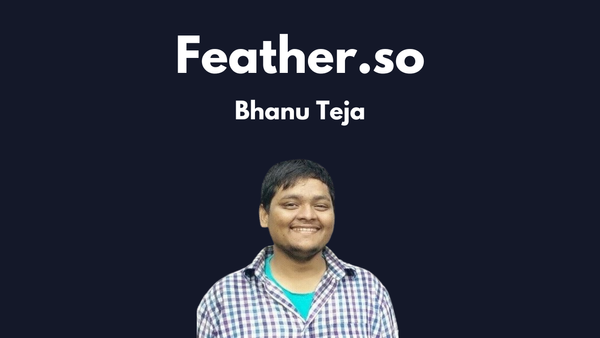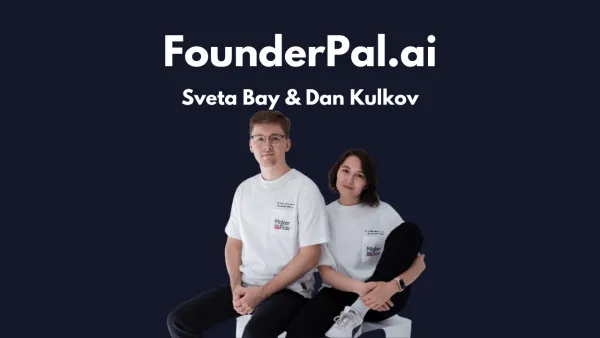From Weekend Hack to $100M ARR SaaS Startup in 8 Months - Lovable.dev
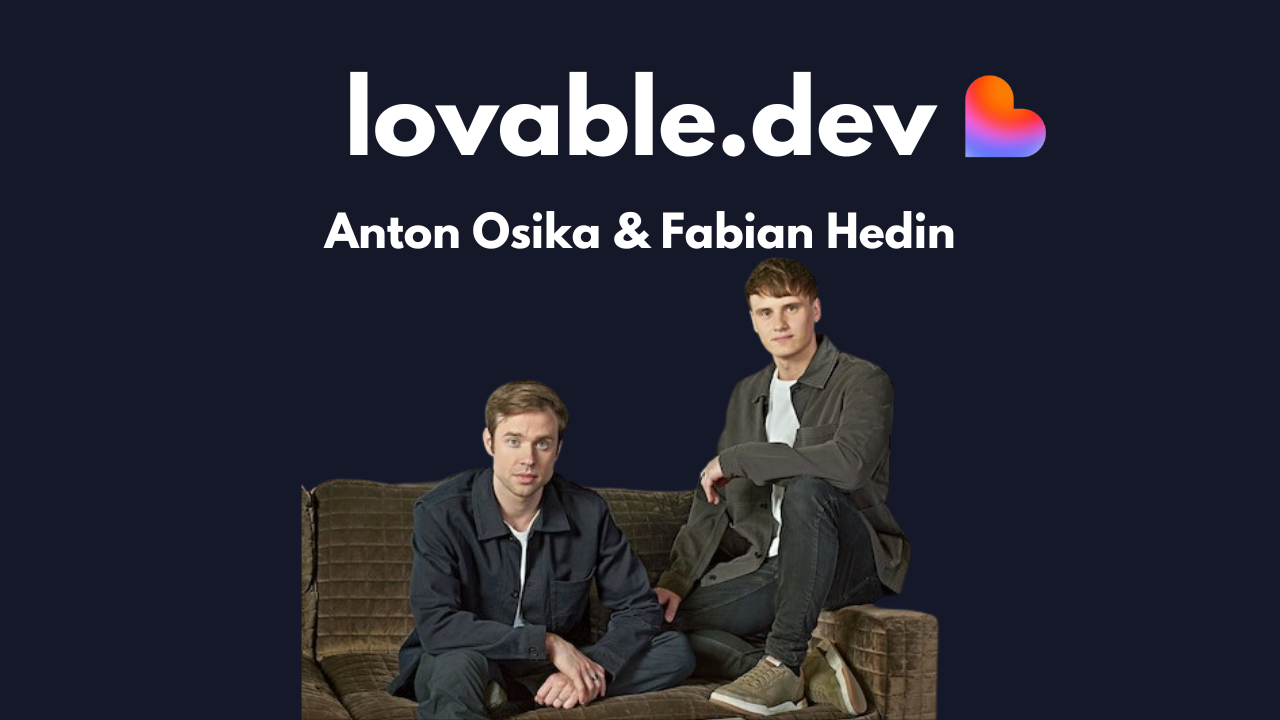
Some startups take years to find their stride. Lovable.dev took weeks.
Founded in 2023 by Anton Osika (@antonosika) and Fabian Hedin (@FabianHedin) in Stockholm, Lovable lets you build full apps and websites by chatting with an AI. Type your idea, and the platform ships working code with hosting, payments, and email already plugged in.
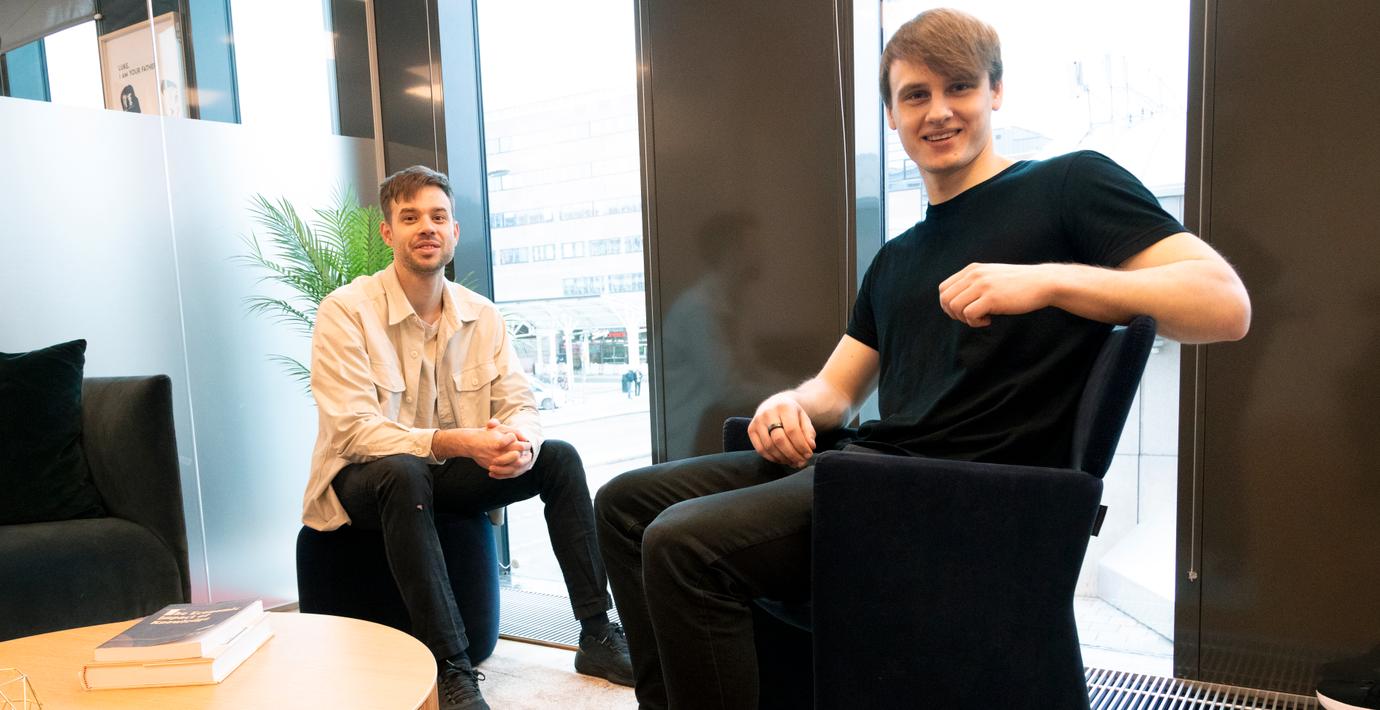
Within just two months, the team hit $10M in annual recurring revenue. Eight months later, they raised $200M at a $1.8B valuation. Numbers like these feel unreal, but the story behind them shows what happens when timing, product, and execution all click together.
This case study will show you how Lovable started as a weekend project, how it scaled at breakneck speed, the marketing moves that fueled its rise, the mistakes the founders made along the way, and how you can use the same playbook for your own project.
The Moment Lovable AI Was Born 👶
Anton wasn’t looking to build a unicorn. At the time, he was CTO at another startup, frustrated by how many great ideas died because there weren’t enough developers to build them. One weekend he hacked together a small tool called GPT-Engineer. The idea was simple: describe what you want in plain English, and the tool would generate the code.
He threw it on GitHub with zero expectations. Then something wild happened. Developers everywhere started sharing it. Stars on the repo shot up, Twitter blew up with demos, and people were building apps overnight. In a matter of days, Anton realized this wasn’t just a side project, it was a gold mine.
That’s when Fabian joined. Together, they asked: what if this wasn’t just snippets of code, but a full app builder? Not a toy, but something that handled databases, authentication, payments, and deployment. That shift was huge. It meant Lovable wasn’t just helping people “play with code” It was helping them ship real businesses.
The bigger opportunity snapped into focus when non-technical users started using the tool to publish working projects. It wasn’t just for engineers anymore. Suddenly, Lovable was the bridge between an idea and a live app.
Growth and Scaling 🚀
The early momentum was electric. In the first 60 days, Lovable hit $10M ARR with a team of just 15 people. By month seven, reports showed revenue between $75M and $100M ARR, depending on the source. The numbers were insane, but they reflected something very real: users loved the product because it actually worked.
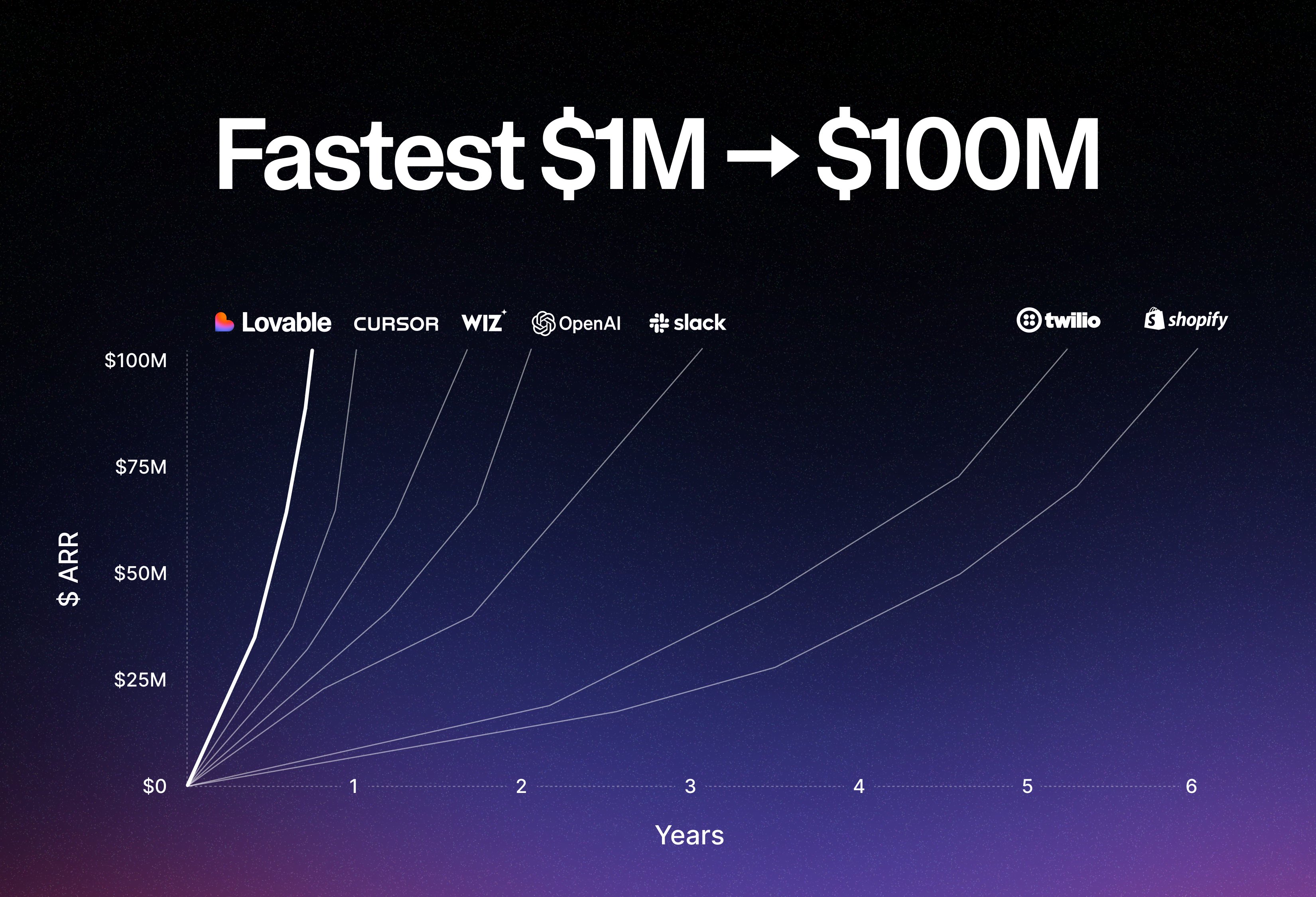
The team kept things lean. Instead of chasing enterprise sales or building a huge team, they let the product do the selling. Anyone could sign up, build something that looked magical, and then hit a natural paywall when they wanted to scale, go private, or collaborate. That’s product-led growth in its purest form.
In July 2025, Lovable.dev raised $200M at a $1.8B valuation. The round gave them resources to expand, but it also brought pressure: keep the pace, keep the quality, and don’t lose the magic that made the first users fall in love.
This week I’m sharing the full deep dive. Usually, only subscribers get the complete case study and the step-by-step guide from idea → strategy → product. If you’d like access every week:
Marketing Deep Dive
Community Launch
Lovable didn’t launch with ads or a PR firm. It launched with a GitHub repo. GPT-Engineer was open-source, so anyone could see the code, play with it, and contribute. That transparency built trust and community before a dollar was spent on marketing.
How you can apply it this week:
- Put out a small but useful tool that shows your core idea.
- Add a clear README with a demo GIF.
- Post it on GitHub, Twitter, or LinkedIn.
- Invite feedback openly.
Viral Demos
Lovable went viral because it showed magic in under a minute. Videos of “build Airbnb in 30 seconds” or “launch a full SaaS with Stripe integrated instantly” spread like wildfire. People don’t share landing pages. They share jaw-dropping demos.
How you can apply it:
- Find the one transformation your product makes magical.
- Script a 45-second demo where the before/after is clear.
- Post it everywhere. Repeat weekly.
This worked for Loom, Framer, and Runway. Your demo should make someone say: “Wait… is that real?”

Product-Led Growth
Lovable didn’t need an army of sales reps. The free plan let people play, and once they needed private projects or team features, paying felt obvious. By the time a credit card was required, users were already hooked. If you want to try it yourself, here’s the link: Lovable.dev
How you can apply it:
- Let new users reach an “aha moment” in under 5 minutes.
- Gate the next natural step behind a paywall.
- Add in-app nudges that explain why the upgrade matters.
Templates and SEO
Lovable published templates for specific use cases: landing pages, SaaS dashboards, booking tools. Each template came with its own landing page, optimized for SEO. When people searched “create booking app fast,” Lovable showed up with a working template.
How you can apply it:
- Write 5 use-case pages with keywords your users search for.
- Attach a ready-to-use template to each page.
- Record a 60-second demo of the template in action.
This is how Webflow and Canva built traffic engines that doubled as onboarding flows.
Integrations and Partners
From day one, Lovable integrated with tools like Supabase, Stripe, and Resend. This made the product feel “production ready” instead of a toy. It also gave Lovable a credibility boost by standing next to trusted brands.
How you can apply it:
- Pick one tool your users already trust.
- Build a simple integration.
- Record a demo that shows them working together.
- Pitch it to the partner’s team for a co-marketing push.
Zapier and Airtable used integrations to build ecosystems. Lovable did the same to look serious fast.
Social Momentum
Lovable didn’t rely on one channel. Every milestone -$10M ARR, $75M ARR- funding news was turned into a social proof moment. Users reshared because they were proud to be “early” on something exploding.
How you can apply it:
- Celebrate small wins publicly (first 100 users, first $1k MRR).
- Package numbers visually: screenshots, charts, or gifs.
- Tag users or partners so they reshare.
Learnings from Lovable’s journey:
✅ Open-source spark: Anton’s weekend project on GitHub turned into Lovable’s growth engine.
✅ Demos over claims: People didn’t have to believe the pitch, they saw the magic in real time.
✅ Lean team, big focus: With only ~45 employees at $100M ARR, every hire counted.
❌ Over-reliance on GitHub: In January 2025, Lovable went down for almost a full day because of GitHub rate limits. Anton admitted they hadn’t built safeguards early enough. For founders, the lesson is simple: don’t let one dependency take your whole product offline.
❌ Pricing confusion: Some early users complained that pricing shifted quickly and felt unclear. The team fixed it by clarifying tiers, but it cost goodwill. Lesson: design your upgrade path early and avoid sudden changes.
❌ Growing pains: Scaling to millions of users meant bugs and stability issues slipped through. Lovable had to catch up fast on support and reliability. If you grow quickly, prioritize stability before your reputation suffers.
How could you replicate this idea step by step?
Lovable’s core idea is simple: take something that normally requires weeks of development, and let someone launch it in minutes by describing what they need. The magic isn’t “AI makes it faster” The magic is that non-technical people can finally do it themselves.
So if you want to replicate the model, don’t think “AI + random workflow” Think: what group of people is blocked because they lack skill, but would pay for the power to do it themselves without hiring experts?
Here are three niches where that same model would actually work:
- Video marketing: founders and coaches who need promo videos but can’t edit or afford an agency.
- Graphic design: small businesses who need logos, pitch decks, or campaign graphics but don’t know Photoshop or Figma.
- Content campaigns: startups that need a full set of assets (emails, ads, social posts) but can’t hire a marketing team.
How to Go From Idea → Strategy → Product
- Pick one niche. Don’t start broad like Lovable. Focus tightly, for example, “AI video ads for small businesses”.
- Find the workflow they hate. Talk to 5–10 real people. Write down the exact tools and steps they currently use (e.g. script in Google Docs, freelancer for editing, Fiverr for voice-overs).
- Define the magic moment. In Lovable, it was “type Airbnb → full app” For video, it could be “type coffee brand → ready-to-post Instagram ad”.
- Map the workflow into APIs. Example: GPT for script, ElevenLabs for voice, Runway for visuals, FFmpeg for edits.
- Wrap it in a simple UI. Build a clean front-end with Bubble or Next.js so users don’t see the complexity underneath.
- Create one killer template. Don’t try to be everything. Start with one use case, like “30-second Instagram ad”
- Launch with a demo. Record a 60-second video of the transformation: before (messy tools) → after (AI video in minutes). That demo is your growth engine.
MVP Example: Video Marketing
Tools to build it:
- Frontend: Bubble (no-code) or Next.js.
- AI APIs: OpenAI (script), ElevenLabs (voice), Runway (video).
- Automation: Zapier/Make to chain steps.
- Output: FFmpeg (for edits) + cloud hosting.
Imagine a product called PromptAds. A founder types:
“Make me a 20-second ad for a new fitness app, upbeat and energetic”
In two minutes, the platform delivers:
- Script written by GPT.
- Voice-over generated by ElevenLabs.
- Video clips from Runway and stock APIs.
- Auto-edit with captions and transitions.
At the end of the day, Lovable’s story is a reminder that big things often start small. One weekend project, one spark of demand, and the courage to keep going can open doors you never imagined.
You don’t need to chase unicorn numbers. Focus on creating that “wow” moment for your users and let it guide your next step. Start where you are, build something people can love, and see how far it can take you.
If you’re curious to see how it works, check out Lovable.dev
That’s all for today. Remember, every big story starts small, maybe yours is next. See you next week.


